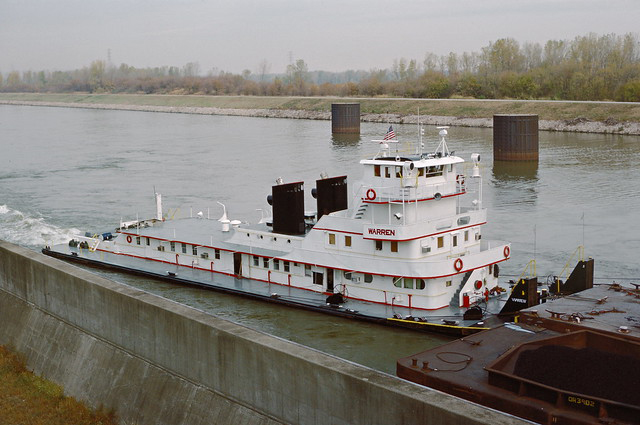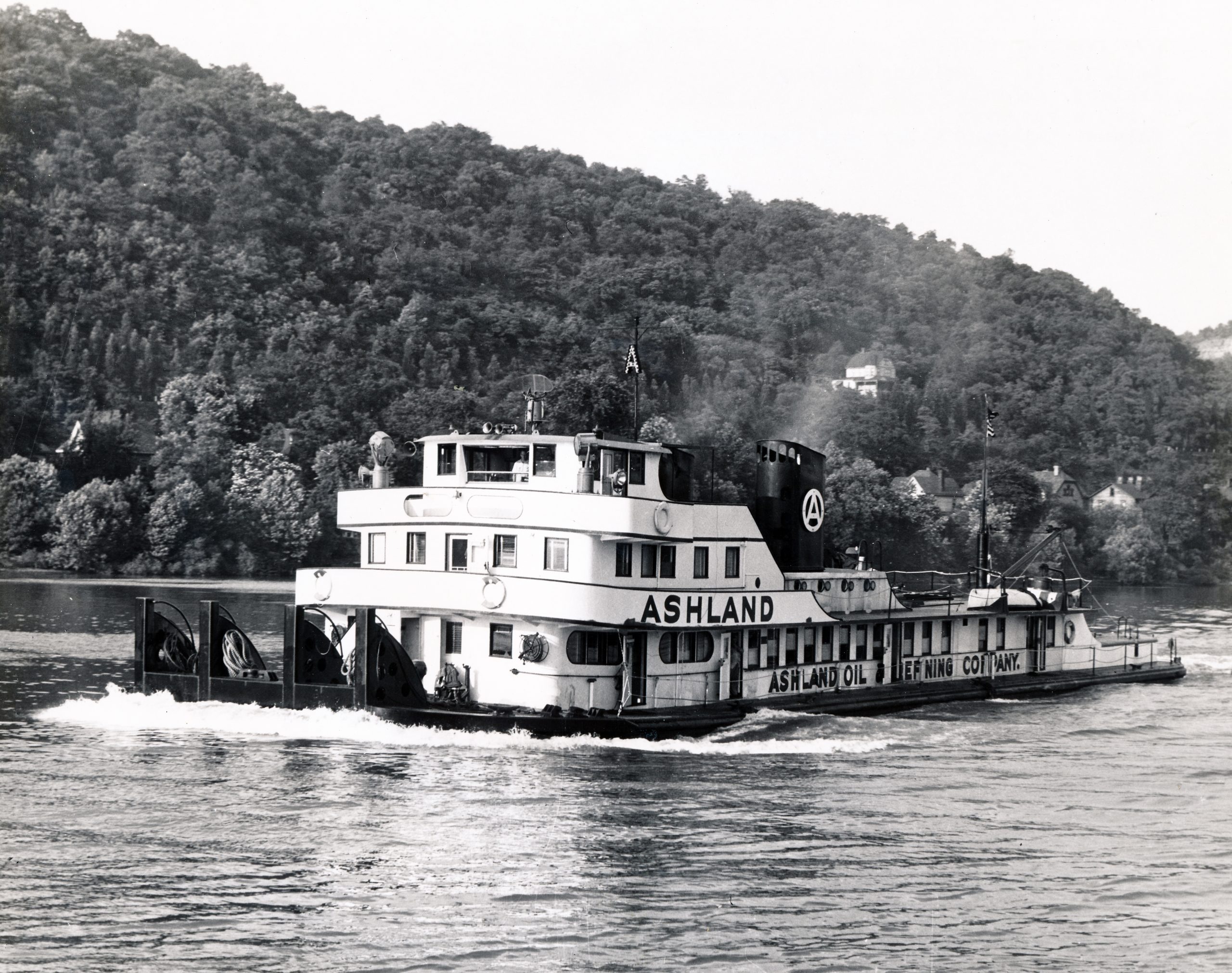The last three columns recounted a letter written by noted historian and author Capt. Frederick Way Jr. to the marine superintendent of Ashland Oil & Refining Company AO&R) in January 1943 to explain why the 1,610 hp. Ashland had “gone missing” during a flood. At that time, there were no communications systems aboard towing vessels such as those enjoyed today. The letter was saved from a cache of company files that were to be discarded by the late Robert L. Gray, who passed it on to Robert E. “Bob” Kennedy, then author of the Upper Ohio News column in The Waterways Journal. Kennedy included the letter in a story that appeared in the July 8, 1978, issue of the magazine.
The August 12 issue carried a response from Capt. Way, who said in part, “My thanks to Bob Kennedy for hanging on to the salvage from Ashland Oil and to the WJ for printing it. … Yes, I admit to writing the thing and am surprised only that Ashland Oil in its infinite wisdom did not get rid of it years ago.” He went on to describe his war time service with AO&R and that he left in order to oversee the transfer of the steamer Delta Queen from California to the Mississippi River system in 1947.
The diesel towboat Ashland was built by Calumet at Chicago in 1941 as the first of three nearly identical sister vessels designed by A.M. Deering. The Ashland was 145 feet by 31 feet and was powered by a pair of direct-reversing Fairbanks-Morse 37E engines turning 300 rpm. The propellers were 82 inches in diameter with 47-inch pitch.
When it was new, the Ashland’s paint scheme included a dark color on the coamings, the stacks and a broad band on the main cabin, with the remainder of the cabins painted white. The company hired Robert L. Gray into the marine department about the time the new Ashland entered service. He related to this writer that his first duties involved getting the boat ready for a christening at Ashland, Ky. According to Gray, the boat had been painted with the same paints used to coat storage tanks and that it “chalked,” with the colors running down onto each other. He described the paint as a “real mess.” At some point after this, the color scheme was changed to all-white with black trim and red stacks, a scheme that was synonymous with Ashland Oil for years.
Two near sister vessels to the Ashland, the Paul Blazer and the Tri-State, also joined the AO&R fleets in 1941 and 1942, respectively. The primary difference between the boats was that the latter two were powered by National Superior diesels, rather than F-M. Following the war years, the Ashland was commanded by Capt. Robert “Bobby” Smith, who had been master of the DPC steamer Midway Islands, which AO&R also operated (WJ May 6, 2024). Smith had been a young pilot aboard the steamer J.C. Rawn when it exploded at Huntington, W.Va., in 1939 (WJ April 8, 2024).

In 1946, the Tri-State was outfitted with the first successful radar on the inland rivers. All of the major vessels in the fleet were soon radar equipped. In 1948, the Ashland underwent a major rebuilding at the yards of Dravo Corporation, Neville Island, Pa. The original stern was removed, and a new stern with kort nozzles was installed. The dimensions of the boat then measured 152 feet by 31.1 feet. This project also saw the original F-M diesels replaced with a pair of GM (Cleveland) 16-278A engines and Falk reduction gears, which gave the boat 2,500 hp. at 750 rpm. The pilothouse was remodeled with new front windows by Kearfott and a console with Westinghouse engine controls.
In 1960, AO&R restructured its fleet. Certain older vessels were “sold” to long-time captains and trusted individuals to work back for the company. The Ashland was sold to Harper Towing Company, Catlettsburg, Ky., and renamed Jerry Harper. In March 1961, it was sold again to Cavalier Towing Company of Memphis, Tenn. In November 1962, it was renamed Pamela D. Capt. Delly “Dutch” Clark led Cavalier Towing, and for many years, the Pamela D was in a dedicated run from Owensboro, Ky., to the AO&R crude oil dock at Kenova, W.Va. It would often trade tows with other AO&R vessels and return to Owensboro to load another tow.
In 1973, the vessel was sold to Drake Towing Company of Metairie, La., and it underwent another extensive rebuilding at New Orleans. This project saw the boat widened by 12 feet to 43 feet, and the pilothouse was raised significantly. It was also repowered with GM 16-645E2 engines of 3,800 hp. After the rebuild, the boat came out with the new name of Warren and towed under charter to Union Carbide for some time. Throughout, it retained the radio call sign of WA 2570.
The Warren was chartered to Argosy Barge Line Inc., St. Louis, in April 1984 and was sold in January 1985 to G&C Towing Inc., Point Pleasant, W.Va. In 1991, it was dismantled and sold to a local contractor, who entertained rebuilding it. At the time, the engines were placed on the mv. Capt. Charles H. Stone, which today is the Capt. Johnny Coe. The Warren was later sold to marine broker Mike Marshall and Don Salyers of R&D Associates, Catlettsburg, Ky. It was ultimately scrapped, but the pilothouse and upper cabin were removed and transported to the Marshall University Inland Waterways Academy above Guyandotte, W.Va., where it was utilized for many years as a fire simulator. Eventually, the steel became brittle and unsafe, so the structure was scrapped.
Featured image caption: As the Ashland after installation of new stern in 1948. (Photo from the Dan Owen Boat Photo Museum collection)



